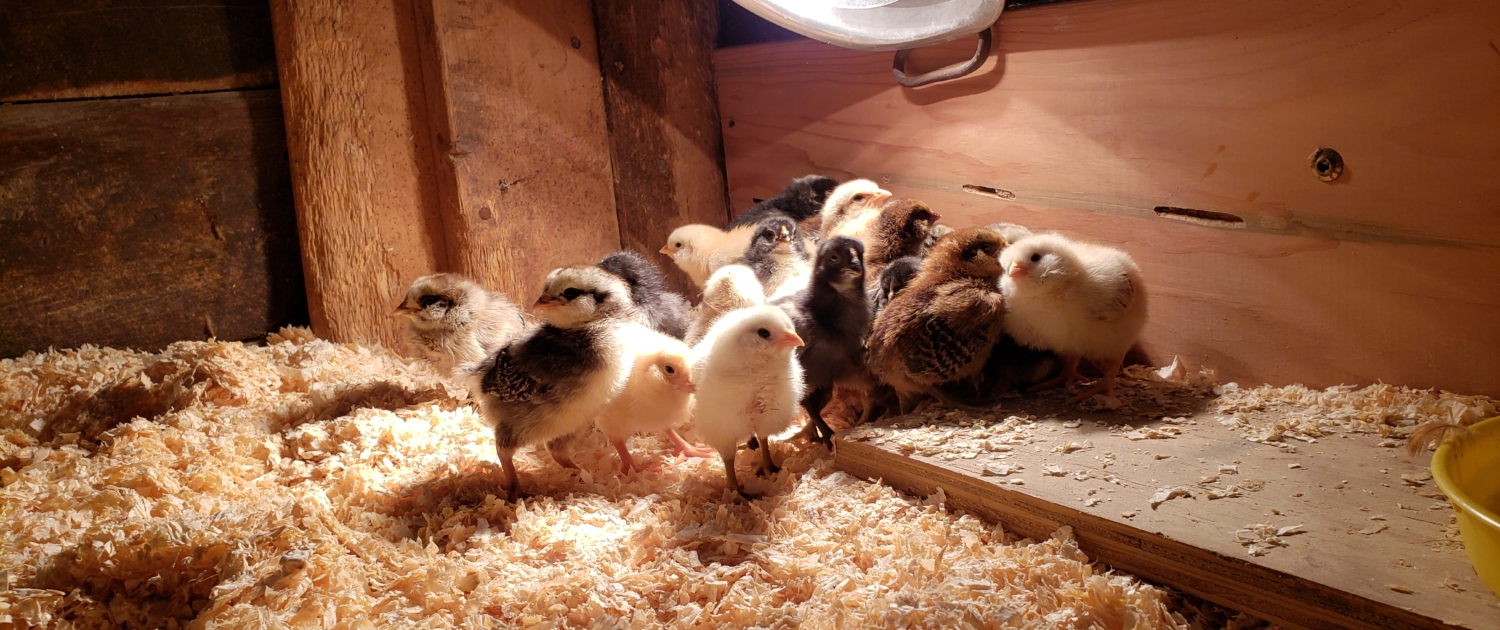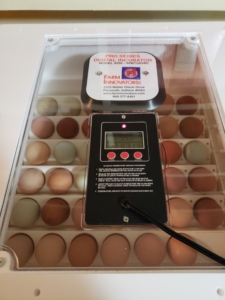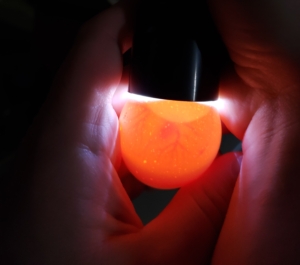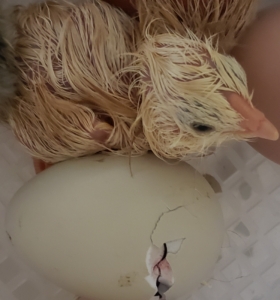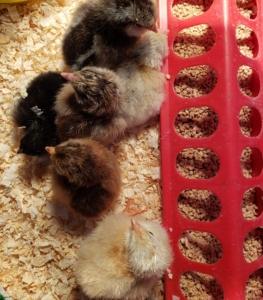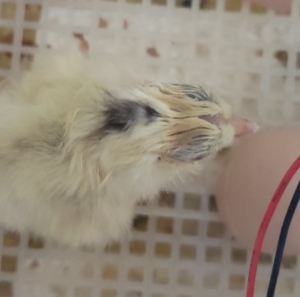Our First Time Hatching Chicks
In our second year of operation, we continue to enjoy “firsts” on the farm. This spring, one of the most enjoyable was hatching our own chicks.
Last year on a whim, we added three Americauna chicks from the local feed store to our flock. And they grew into roosters.
I (Kristina) am not a big fan of roosters. They can be a little rougher with my hens than I would like. But, Caleb really wanted to hatch our own eggs. After weeks of me shaking my head every time I passed the incubator, I have to admit that I’m glad we did it!
We bought an incubator at our local farm store and loaded it up with 40 eggs. Since this was our first time, we decided to do some experimenting. We have several different breeds of hens on our farm, and some of them lay distinctly colored eggs. So, we included a variety of egg colors to get a variety of Americauna crosses. We also used some eggs that had been laid that day as well as eggs that had been laid a few weeks prior. and stored at room temperature.
After five days in the incubator, we checked to see if any of the eggs were growing. You can test eggs in the incubator using a flashlight in a process called candling. If an egg is growing a chick, you’ll see a red spot and blood vessels forming.
The eggs started to hatch a few days ahead of schedule, but for us the timing was perfect. Our eggs were hatching just as social distancing measures were going into effect. We were mesmerized as they hatched over a period of 72 hours.
The chicks stayed in the incubator for about 24 hours after they hatched to stay warm and for their down to dry. Chicks receive enough nutrition inside the egg to go for a day without food and water. After they fluffed up in the incubator, we moved them to a brooder in the house until they had all hatched.
One of our last chicks had difficulty hatching. The membrane beneath the shell stuck to the chick’s down. As a result, the chick couldn’t regulate its body temperature. It also had difficulty walking since it couldn’t move its wings to balance itself.
When it became clear the chick needed our help, we washed it several times with gentle dish soap and warm water. To keep the wet chick getting chilled, we gave it a quick blowdry. Once it was clean and dry, it was amazing how quickly it was able to join the rest of the chicks in the brooder.
We had 26 chicks hatch out of the 40 eggs, and we can’t wait to see how these Americauna crosses grow. We’re looking forward to hatching more chicks to grow our flock.

